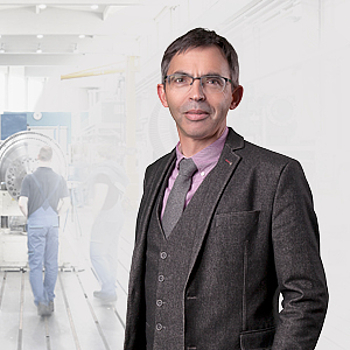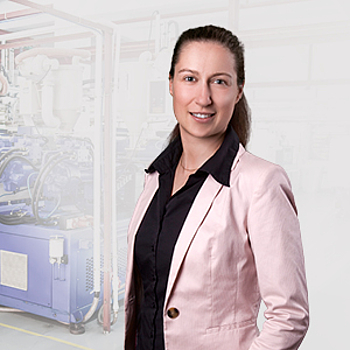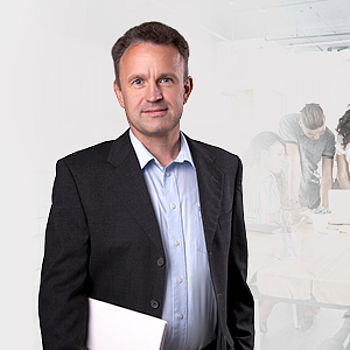PATENT PROTECTION
inclusive utility model
The object of protection under patent law is always a technical invention, which is defined as a teaching for the solution of a technical problem, in particular a rule for planned action, using controllable natural forces to bring about a causally overseeable success, which must be capable of repeated execution. Pure discoveries are not protected (at earth, masses are affected by gravity) or ideas (one could fly to moon) but concrete, working solutions (by rocket with engines, life-support systems etc. gravity of earth can be overcome and journey to moon can be started). Thus, the patent can be used to protect manufacturing and working processes, certain uses, objects, materials, devices and arrangements.
Our technical fields of activity include Electrical engineering / electronics. Mechanical engineering/mechanics, physical apparatus, biotechnology, computer-related inventions (software). You can find examples of our work in our references..
The most important protected areas: German Patent, European Patent, Unified Patent, International Patent Application
Detailed information on the most important industrial property rights can be found in a bundled form in our information brochure.
Crystallizing the invention
You have found a great solution for a problem? In discussion with you, we find the core of the invention and agree on a strategy to achieve patent protection for this solution.
There are many ways to formulate a patent application - not every one fits your invention. After you have explained the invention to us, we will present you with the best way to obtain protection. This includes choosing the right patent category, determining the necessary disclosure and, if necessary, defining the parts that require secrecy, which can be better protected, for example, through know-how contracts.
Prior art search
Are you sure no one before you had the same idea? If not, it may be useful to conduct a search before drafting a patent application. In doing so, we search the prior art for you, especially in patent databases for identical or similar technical solutions and ideas. If we find comparable solutions, we discuss the remaining differences and possibilities of delimitation with you. A good search can avoid unsuccessful patent applications. At the same time, the chances of your patent being granted will increase if we know the closest prior art before the application documents are prepared, thus enabling us to better highlight the special features and advantages of your invention.
Draft patent application
Once the decision has been made to draft a patent application, we will prepare all the necessary documents for you. Usually, we need all available information on the invention, for example in the form of a brief description and/or sketches, technical drawings, presentations, etc. We can also work out details in a personal conversation. Our technical background allows us to quickly understand your invention with your help, which is a basic requirement for the subsequent formulation of the patent application.
One of our core services is to support you in the acquisition of the patent from the very beginning and to formulate a patent application in the first step, which optimally protects your invention. The greatest care should be taken when drafting the patent application. After all, the quality of the application documents essentially determines the scope of protection and the grantability of the future patent. The subject matter of protection by the patent is not the product or process as it is materially expressed or mentally planned by the inventor, in other words, how it can possibly be produced, touched or seen. Rather, a mental image of the invention is patented, which must be expressed by means of language. What cannot be necessarily and comprehensively deduced from the wording of a patent claim is not protected.
On the basis of your information, we will prepare a detailed patent description and the patent claims, as a rule also drafts for explanatory figures. It is important to disclose the invention in sufficient detail and at the same time to define the maximum scope of protection through optimal drafting of the patent claims. Due to our many years of experience we know the effects of certain formulations as well as the stumbling blocks which can be avoided by correctly drafting the patent application documents.
Obtain patents
After filing your patent application with the respective patent office, we act as your representative. All decisions of the patent office are therefore addressed to us and we forward them to you with appropriate comments. During the official examination procedure, we evaluate the official communications, check the relevance of the prior art used by the Office and advise you on the appropriate course of action. After coordinating the contents with you, we prepare the responses to the examination communications and, if necessary, adjust the patent claims if this is necessary for a successful delimitation from the citation of the Patent Office.
Beyond that
- we advise you on the registration strategy,
- we monitor all deadlines,
- we will discuss the options with you when answering audit notices,
- we forecast the chances of success in requiring action against possibly erroneous decisions of the patent office,
- we conduct appeal proceedings before the German Federal Patent Court and legal appeal proceedings before the German Federal Supreme Court
Dismiss or file an objection
An opposition can be filed against any German or European patent that is granted (similar possibilities exist in many other countries). The opposition must be filed with the Patent Office within a period of 9 months from the publication of the mention of the grant of the patent.
Should your patent be attacked by an opposition, we will take over the defence of the patent. In most cases the opposition procedure is more complex than the grant procedure, since the patent is regularly re-examined in its entirety and the opponent can present new arguments and assert further prior art.
In the opposite case, we also take over the representation if you want to take action against an unjustly granted patent by way of an opposition. For this purpose, extensive searches usually have to be carried out in advance.
Initiate invalidity proceedings
Patents can be re-examined for their eligibility for protection even after expiry of the opposition period. This is done within the scope of invalidity proceedings, in which we represent our clients in the first instance before the Federal Patent Court and, if necessary, in the appeal instance before the Federal Supreme Court, both when defending our own patents and when attacking third-party patents.
Bring infringement actions
Property rights are only valuable if they generate an economic benefit. Therefore, we regularly advise our clients to acquire property rights where at least the potential for such use is apparent. This goes hand in hand with the enforcement of an intellectual property right against third parties, if necessary, if they use the object of protection without authorisation.
Prior to a legal enforcement, which we already regard as the final resort due to the ever remaining risks, there is always the attempt to achieve compliance with the property right by way of an agreement. Disputes concerning industrial property rights therefore often begin with a reference to the industrial property right or a warning. In many cases, the claims of the property right owner can be enforced in this way. If necessary, a license agreement can also result from which both sides benefit.
Of course, we also represent you in reverse constellations, because there are always cases in which property right owners unjustifiably demand the omission of business activities which, on closer inspection, do not encroach upon the scope of protection of the property right asserted.
Get in touch with us.
Frequently asked questions about patent protection
For creative work results in the field of technology, the most important property right is the patent (flanked by the utility model as a further technical property right). It offers the broadest scope of protection, the longest term of protection and the greatest reliability for its owner on the basis of its substantive examination in the granting procedure.
From the point of view of small and medium-sized enterprises, the patent is an important means of standing up to the economic power of large companies. Patent protection is particularly important because if an innovative company's creative output is above average, there is a strong incentive for competitors to imitate it. By saving development costs, which are not incurred by simple imitation of an already completed development, which is also permissible without patent protection, imitators can counter the innovative company with lower prices on the market.
The legal effects of the patent prevent this innovation-damaging imitation. The patent grants its owner the right to the exclusive use and exploitation of the protected object. This positive right of use is accompanied by the right to exclude third parties from use as a negative right of prohibition. This prohibition right is directed against all acts of exploitation such as the production, offering and distribution of the protected object. The economic effects are derived from this. As far as the scope of protection extends, competitors are excluded from the market. For the duration of patent protection, the owner of the patent is solely assigned the economic value of his invention.
The patent is economically exploitable as intellectual property. It can be sold or used as collateral for loans. Furthermore, others can be granted the use of the right in whole or in part by way of licensing.
NO. The object of protection under patent law is always a technical invention and the patent must fully disclose the invention. However, the patent also defines a clearly delimited subject matter which, depending on the version of the patent claims, covers less, differently or, in the best case, more than the original invention.
From the requirements for a patent application briefly described above, the three most important sources of error in the drafting of the patent application can be identified:
- The application is narrowly wordedIf the application is not sufficiently abstract, the scope of protection may be so small that the patent can be easily circumvented. It is also conceivable that by clumsy formulation protection is not claimed for the actual invention at all, but for a completely different subject matter.
- The notification is too broad;In these cases, the patent cannot be granted in most cases because it would cover prior art which can no longer be monopolised. It is particularly problematic that due to the fact that the own application becomes prior art through publication, the errors made cannot be corrected by an improved subsequent application.
- Essential details of the invention are concealed.Usually out of the consideration not to disclose too much of the knowledge (know-how) acquired in the course of the development to the competition, the invention is not described sufficiently clearly, so that the invention is not disclosed to an extent sufficient for grant. The consequences of such "secrecy" can be particularly serious if a subsequent application is filed in the USA, for example, based on the German patent application, since even higher requirements are often imposed abroad for the complete disclosure of the invention (description of the "best mode").
Mere discoveries (on earth the gravitational force acts on masses) or ideas (one could fly to the moon) cannot be patented, in contrast to concrete, functional solutions (with a rocket with engines, life-support systems etc. the gravitational force of the earth can be overcome and the journey to the moon can be started).
The requirement to use controllable natural forces also excludes from patent protection purely theoretical achievements such as accounting systems, mathematical methods and, in general, all non-technical achievements, for example in the fields of science, economics, art and literature. Not patentable as such are:
- Discoveries, scientific theories, mathematical methods
- Aesthetic creations [see section E) "Designs"]
- Plans, rules and procedures for intellectual or business activities, and for games
- Programs for data processing systems (software)
The material requirements for patent protection are
- Novelty,
- Inventive step,
- industrial applicability.
Novelty means that the invention must not already belong to the state of the art as determined by all publicly available knowledge. Dangers lurk here that are often overlooked. Also own publications of the invention before the application date - for example in brochures - are detrimental to novelty. Lectures at technical congresses or the like are also considered to be publications which are detrimental to novelty. The invention should therefore always be filed with the Patent Office before it is disclosed to the public.
The requirement of inventive step is only fulfilled by what is not already obvious to a person skilled in the art from the prior art. The required inventive step is measured by the level of knowledge of the average skilled person. The requirements for the inventive step are often overestimated by companies and inventors who have no experience in the field of patents. The increasing number of patent applications alone is an indication that patents are not only granted for so-called pioneering inventions.
After all, the invention must be capable of industrial application. This is the case if the subject matter of the invention can be manufactured or used in any industrial field, including agriculture.


